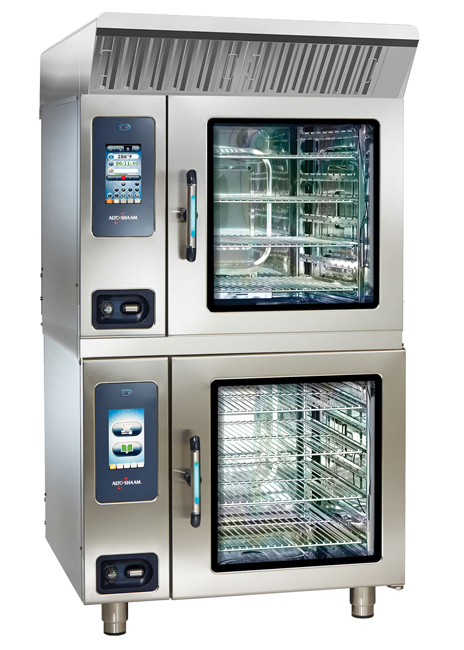When deciding whether to purchase a combi oven, begin by assessing the menu to ensure the equipment can handle the operation’s cooking needs and volume. Two stacked combi ovens will provide more cooking versatility than a larger, single unit.
Versatility represents one key attribute that often makes combi ovens attractive to high-volume foodservice operators.
High-speed ovens empower applications that would otherwise not be able to cook very efficiently, economically or to high-quality standards. Without these ovens, many foodservice operators would need to install a full-size kitchen to cook food, which is not a viable solution. These units also can complement an existing kitchen to help with speed of service on items that take a prohibitively long time to cook.
Pizza operations typically utilize deck or conveyor ovens. When producing Neapolitan pizza, though, operators turn to wood-fired ovens. All three ovens operate in vastly different ways.
Convection ovens are great for baking cookies, crusty breads and other baked goods, along with potatoes, casseroles and more. As relatively simple units, many of the tips for keeping convection ovens working well should be common sense to experienced operators.
For cook lines with limited space, combi ovens take the place of multiple pieces of equipment, including convection ovens and steamers. These units also can replace cook and hold cabinets, proofers or slow cookers when used at low-heat settings.
Featured Products
-

Ventech Condensation Hoods
Alto-Shaam
Ventech line of condensation hoods that works with select Combitherm combi ovens made by Alto-Shaam. Ventech PLUS features a HEPA filter along with condensation technology to capture and filter smoke-related vapor, grease and steam generated in the cooking process. These hoods can be factory or field installed.
-

SC-300 Electric Smoker
Southern Pride BBQ Pits and Smokers
The SC-300 electric smokers smoke, roast and serve as holding ovens. Dual wood chip boxes are located on the left and right side of the smoker. An optional steam system replaces the right smoke element in the cabinet. Operators can turn the smoke elements, or the smoke and steam element, on or off independently.
Related Articles
-
When to Replace a Steam-Jacketed Kettle
Read FeatureSteam-jacketed kettles can last as long as 20 years, depending on usage and care. But here are a four signs that it may be time to replace a kettle.
-
When to Replace a Commercial Range
Read FeatureThere are situations in which operators should consider replacing an existing range or adding a new unit to their kitchen.











